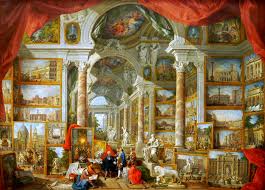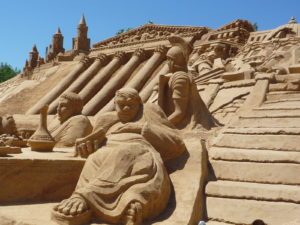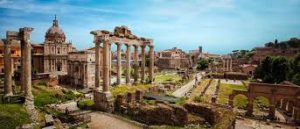The ancient Roman sculpture is generally regarded as being a mass produced copy of Greek sculpture but this is quite clearly an oversimplification. The earliest innovations of “classical” sculpture had already been adopted by the Etruscans.
Roman Statues of gods
Who traded with the Greek colonies of southern Italy, well before Ancient Rome was a city to be reckoned with.

When we think of classic beauty, we think of the statues of gods and goddesses, heroes and leaders created by the ancient Romans.
Roman Statues Painted
The Roman modeled their earliest statues out of clay. They then fired the clay sculptures at a low temperature were and painted them after they were fired, using a technique referred to as “terra cotta.” Roman sculpture set the standard for what we think of as beauty today.

Roman Sculpture vs Greek Sculpture
At the basis of Greek sculpture, we can find a journey of growing consciousness of the individual and his place within the world about him. The application of proportion to the human figure (and to architecture also) is a well-known achievement but we shouldn’t forget the debt owed to the Egyptians before them who likewise applied predefined proportions to their pyramids and sculptures.

The Romans learned this technique from their rivals, the Etruscans. The Etruscans ruled the Romans briefly and then were conquered by them. Once the Etruscans were out of the way Roman civilization expanded further, conquered Greece and the art of sculpture began to flourish. The Roman style of sculpture is influenced strongly by Greek style.
Ancient Roman Sculpture facts
The Romans saw what the Greeks were doing, like it and imitated it. Greek sculptors worked primarily in bronze, a metal that is a mixture of copper and tin, and in marble. The Romans became accomplished in working with metal and marble.

If we consider the Etruscans as a sort of pre-Roman we should consider the achievement in clay figures such as the Apollo of Veii which has astonishing vitality as well as being distinctly Italic in nature. The very statue of the she-wolf feeding Romulus and Remus kept at the Capitoline museums is believed to have been forged in an Etruscan workshop under Roman commission.

A good example of this is the now lost colossal statue of Nero or that of Emperor Constantine, of which a number of pieces are still visible. Alternatively, the individual could pride himself on his collection of sculptures which were relatively commonplace in the gardens of the villas of the rich and mighty.
The lost-wax process
Both Greeks and Romans used the lost-wax process to make bronze sculpture. In this technique, the first version of the statue is molded from wax. This means that the statue can be modeled with enormous detail because the wax is so easy to work.
This wax model is then enclosed in a clay mantle. When the clay shell has dried, molten bronze is poured in through small holes in the mold. The hot bronze melts the wax and fills the mold. When the bronze has cooled the clay mantle is removed, revealing the bronze statue.

Perhaps the great achievement of the Greeks was that of interpreting man in his natural surroundings: studying and analyzing to such a degree as to render proportion and then make that magical step in understanding that in order to convey movement one has to resort to an acceptable degree of distortion.



